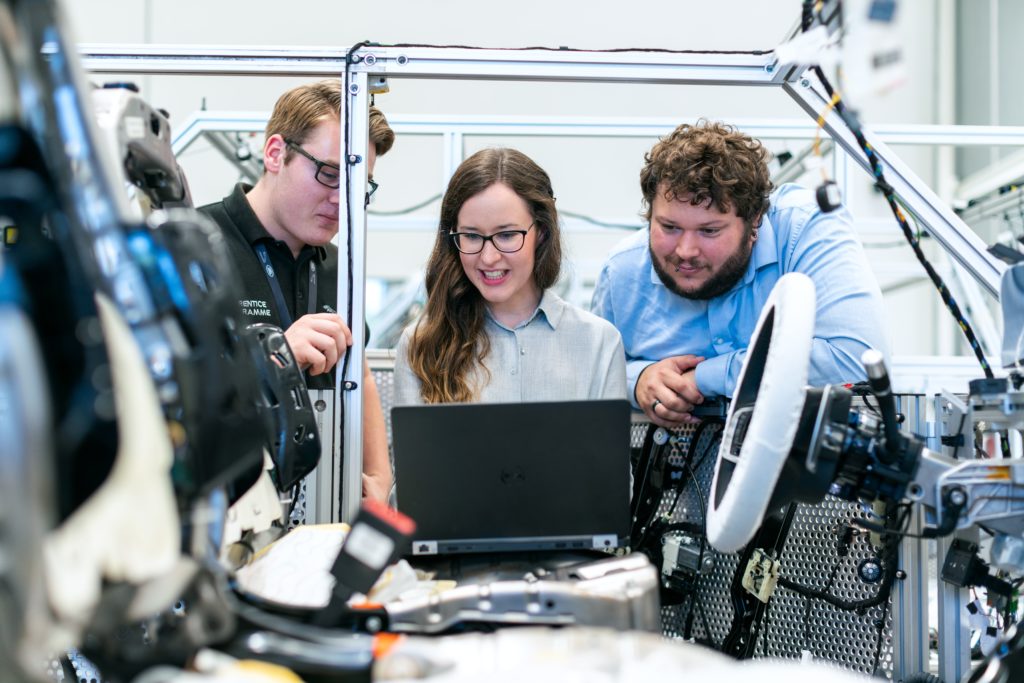Industrial Process Optimization — Without CapEx Costs
Published: August 3, 2021

It’s no secret that achieving industrial process optimization goals in today’s facilities and environments is becoming more and more difficult, yet it’s never been more essential for long-term success.
Various industries face increasing environmental regulations and competitive pressures manifesting themselves as specific but dynamic challenges to optimization work that permits continuous improvement. Too often, external events, personnel shortages, and equipment failures leave producers focused on avoiding and putting out fires instead of focusing on forward-thinking solutions.
Additional demand challenges from the pandemic, the ongoing frustration and competitive setbacks caused by the tariffs, and other supply chain difficulties are keeping companies scrambling to satisfy growing demand and meet customer expectations as opposed to exploring opportunities to streamline processes.
On top of that, industrial process optimization often requires significant CapEx resources, as the solutions for improving performance, reliability, and other key metrics require updating or replacing equipment and investing in hefty technologies and enterprise systems that come with steep price tags. Time is a cost here as well, as the amount needed to bid on, purchase, and complete this work or implement such solutions is extensive — anywhere from several months to years due to the vastness of their scope.
In truth, process optimization is often comparable to personal finances. Going too far down the wrong path is akin to going into debt: as the debt grows, so too does the interest — putting you deeper in the hole. Prioritizing the right solutions, however, is more akin to investing and saving. The results compound in a positive direction, leading to greater opportunities.
And yet, each industrial process optimization solution delayed or not taken compounds the challenges and costs — creating even more barriers to improvement. Ideally, more efficient process flows equates to more resources freed up, which can then be prioritized elsewhere or preserved. What is the solution here? Should process industries simply bite the bullet and launch a massive CapEx program to realize improvements a year or more down the road?
‘Sooner rather than later’ some might say, but fortunately, more financially advantageous solutions are already available that make industrial process optimization attainable sooner — and at dramatically less cost than traditional optimization solutions. At Griffin Open Systems, our AI Toolkit is one such solution. Let’s explore a few ways this innovative artificial intelligence (AI) platform empowers organizations to implement industrial process optimization quickly, efficiently, and affordably.
How the AI Toolkit Enables Industrial Process Optimization
Implementation is Fast and Less Complex
Consider the sheer amount of planning, time, and programming expertise that would be required to upgrade or modify process-related systems like distributed control systems (DCSs) or programmable logic controllers (PLCs). This work would most likely need to be aligned with planned outages on systems, which is when other critical work is often scheduled — thus adding more burden and complexity to already expensive and time-consuming maintenance. Additionally, the manufacturer or vendor for those systems might need to be involved. The bottom line: these factors add significant, prolonged costs to what doesn’t need to be costly.
The Griffin Difference: The AI Toolkit allows for rapid modeling and deployment thanks to its no-code graphical interface. No expert-level programming knowledge is needed, and it can be implemented on existing DCSs, PLCs, and other systems in a matter of weeks. This ensures engineers, operators, and any other team members involved are able to gather data on existing systems, develop new models for optimization, and realize their benefits faster than ever. And the sooner these industrial process optimizations are able to be implemented, the lower the overall program costs will be and the more rapidly the financial benefits can be realized.
Implementation Can Be Less Risky
Making changes to DCS logic or PLC programs often requires waiting until outages occur or requires judicious implementation while the process is active. Mistakes can risk equipment damage or cause unplanned outages.
The Griffin Difference: The AI Toolkit is implemented at the Adivarent Control layer, leaving the existing safety systems and basic control functions intact. Normally, solutions are implemented as biases or fine-tuning adjustments that are responsive to a wider range of processing or manufacturing conditions. This helps operators by automating mundane known corrective actions and the DCS/PLC logic by providing access to advanced AI for optimizing the complex.
The Customization Opportunity is Extensive
Mentioned briefly above, any customization work involved on existing systems — particularly those that are ‘black box’ — means that outside support will be necessary. If more costly technologies or changes are needed, programming may be needed as well. However, these solutions often limit the amount of customization that’s possible — whether that’s due to the limitations of that system, a lack of design flexibility, or generally forcing users into a specific framework for working. What’s needed here is the flexibility to customize processes on-the-fly, rapidly, and as new data comes in.
The Griffin Difference: One of the greatest barriers to digital transformation has been limitations placed on process industries in terms of customization. With the AI Toolkit, internal teams and even third-party developers with whom companies are partnered can develop custom tuning screens, implement custom algorithms, and even capture the knowledge of their operators and engineers in proprietary toolbars. Each of these allows process industries to leverage an already simple and affordable system for greater impact, allowing them to squeeze greater performance out of their systems more efficiently and quickly while reducing costs.
The Payback Period is Shorter
Depending on the number of facilities you have, and the equipment in question that is needing optimization work, the cost to outright replace or upgrade them can be steep (think in the low to middle six figures, if not more). The reality is that when it comes to industrial process optimization, these expenses can be avoided (assuming that the equipment or systems don’t actually require outright replacement due to a complete failure). Instead, an intelligent AI solution can be put in place to better understand how they’re working and where opportunities exist — for less upfront investment.
The Griffin Difference: Compared to sweeping enterprise changes and other technology solutions, the AI Toolkit is vastly more affordable. This has three key benefits: first, the cost to begin optimization work is less steep, meaning you can begin to explore opportunities sooner. Second, those opportunities can be implemented faster thanks to its ease of use, resulting in earlier industrial process optimization wins that produce measurable savings sooner. Third, the no-code interface creates opportunities for a wider group of process experts while keeping ongoing training and support costs lower.
Risk is Mitigated
Whatever your respective industry might be, you face a fair amount of risk in multiple areas: financially, operationally, strategically, and so on. The longer these risks go unaddressed, the more difficult your position becomes. You’ll lose ground to competitors. You might encounter more compliance challenges. Maintaining certain levels of productivity or output might become harder and harder. And along the way, you’ll be losing money.
The Griffin Difference: The AI Toolkit is designed as a flexible, cross-functional solution to many of these risks. By resolving productivity challenges, you thereby solve resultant financial risks. By addressing financial risks, you gain more opportunities to invest in other strategic areas. In doing that, you increase your competitiveness and operation flexibility.
Put the AI Toolkit to Work in Your Facilities
With pressure mounting on manufacturers and other industry organizations to become more efficient, environmentally friendly, and transparent, there’s never been a better opportunity to explore industrial process optimization opportunities. And the AI Toolkit from Griffin Open Systems is the vehicle for those discoveries.
Coupled with our advanced Adivarent Control AI solution that serves as a bridge between control systems and operators, your team will have the tools and preserved knowledge needed to rapidly refine processes, implement change, achieve digital transformation goals, reduce costs, and more.
Connect with us today to see how the AI Toolkit will support your success.

